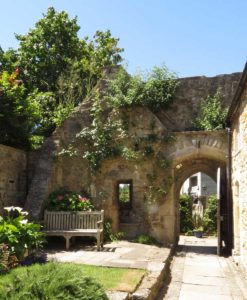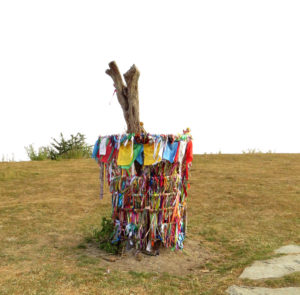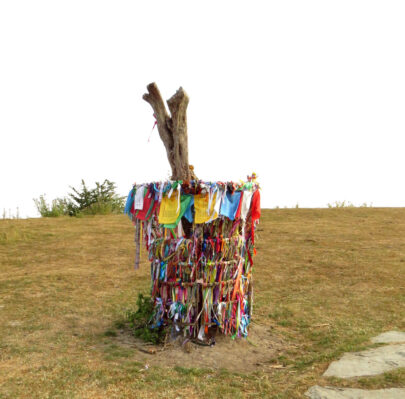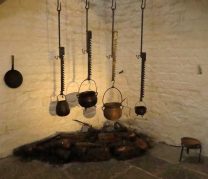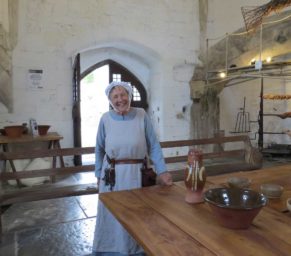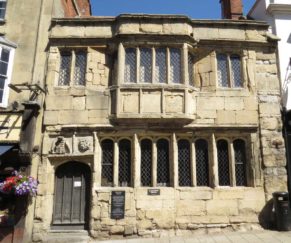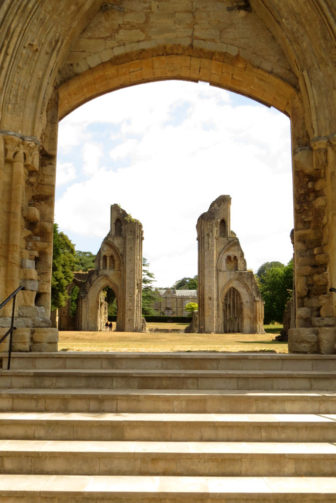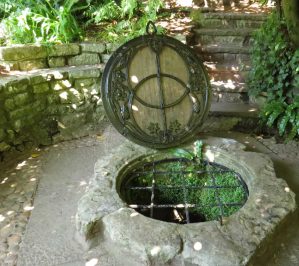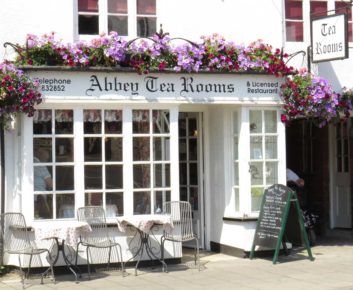Would you travel for Free?
You’ve heard the expression there is ‘no such thing as a Free Lunch’. Do you believe that to be true? or do believe it must come at a cost?
What if I told you, you could travel for free? Well not “travel” per se, but you could at a minimum have free accommodation.
Which may even include a free lunch, breakfast, and dinner too…
Is it be good to be true?
Free food and accommodation are possible and there are two common options I am looking to compare.
1) Work exchange, whereby you exchange a few hours work (normally 5 hours x 5 days) per day for a place to sleep and three meals a day.
Or
2) House sitting, where you look after a home and its furry inhabitants in exchange for a place to sleep.
I’ll be sharing my personal experience of the pros and cons of each, as well as how to make the most of either experience.
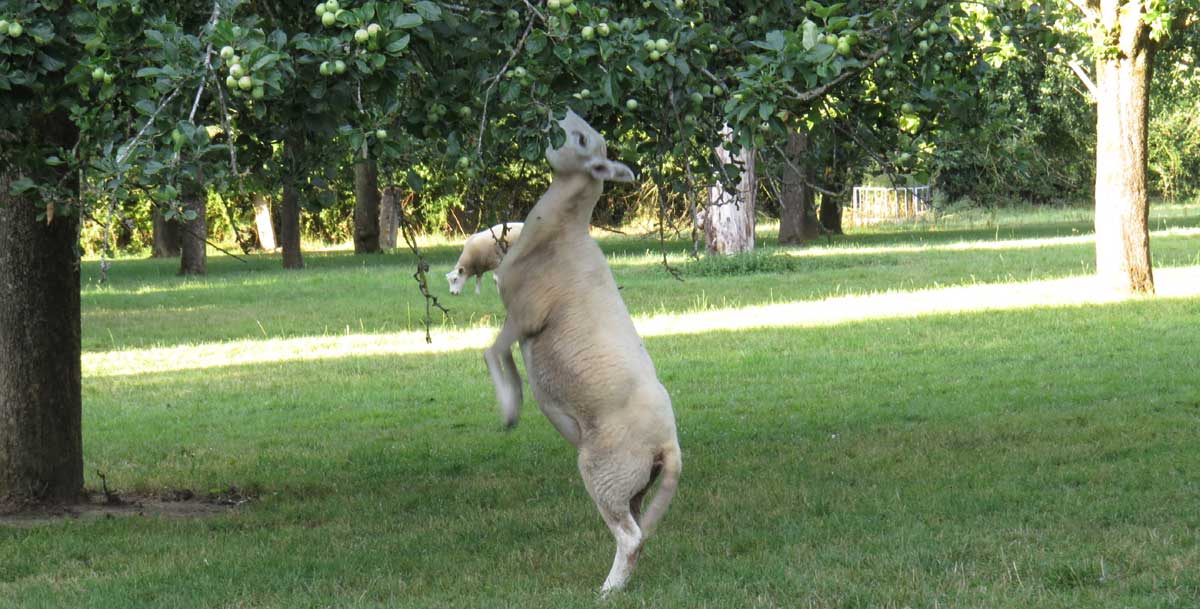
The pros and cons of Work Exchange
There are a few websites where you can find a suitable place to do a work exchange: wwoof (work on organic farms), Workaway and HelpX.
These are the most popular, and they all have a good selection of choices per country. I personally use workaway and have had great success with them. I’ve meet workers that use the other websites who have had equally good things to say.
My best advice when you are looking to exchange your time for work, is to know yourself and what would be of interest to you.
For instance, I don’t do well with big families (nothing against big families, just not used to it), meat farms (I am a vegetarian) or heavy renovation work. So I don’t apply for this type of work.
The clearer you are upfront the more likely you’ll find what you are looking for.
Pros of doing a work exchange:
Free accommodation and 3 meals a day:
Do let them know if you have any dietary issues, so they know upfront. Often a hosts profile will say whether they can cater to a special diet if they don’t do check beforehand. Be sure to check what the sleeping arrangements are, is it an attic, sofa, tent, floor, shared or your own room. Again, personally not a fan of shared, but if you are travelling with friends it might be perfect for you.
Cultural immersion:
It’s a great opportunity to get a first-hand perspective on the local culture.
Language exchange, if staying with a local host.
There is plenty of opportunities to have a full language immersion. The hosts will say on their profile if they also speak other languages.
Yet, there is also often the option to stay with those that speak English, as I did while in France. As it is my dream to move to France and have a B&B there, I was looking for a foreign perspective. What a fabulous place to do research.
Learn new skills such as renovation, permaculture, homesteading.
You can learn almost anything. I’ve learned about the herb comfrey and permaculture gardening. How to look after chickens, shear sheep and work a Tibetan singing bowl.
Meet travellers and like-minded people.
Plenty of hosts have more than one worker, depending on the work and space they have available. Which suits those that are travelling alone or who love being social. Like any social dynamic, there can be pros and cons with this as well.
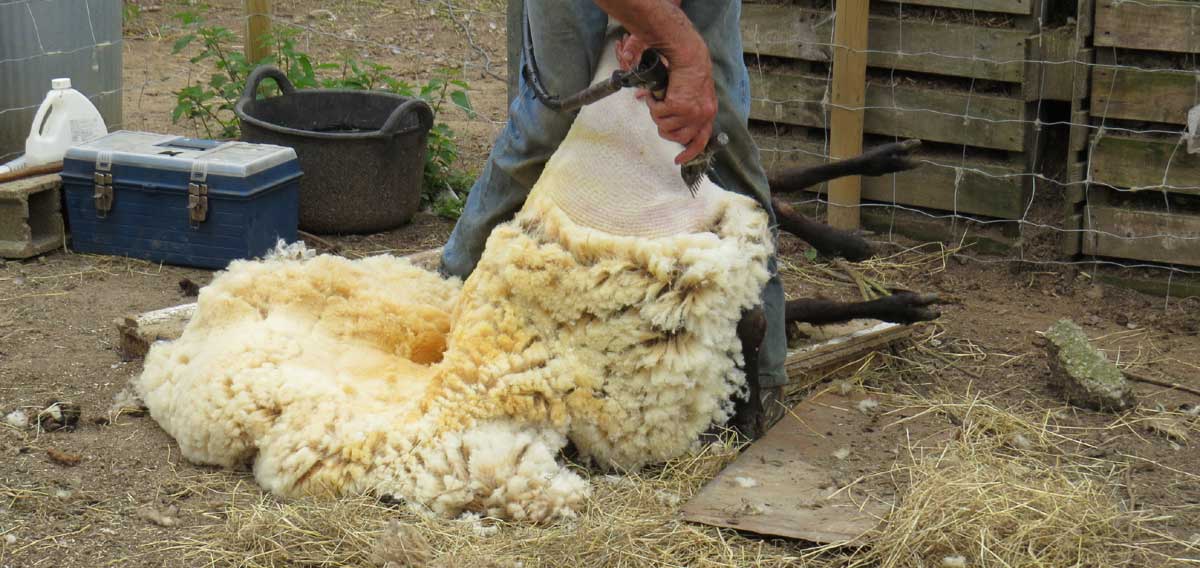
Cons of doing a work exchange
It can take up more time than expected:
Five hours a day doesn’t sound like much. Yet, I felt that I had had less time in a day. This may be due to working extra hours or interacting more with hosts and other workers. This isn’t bad, but worth keeping in mind.
Do also check the host’s profile, there are some that prefer that you do seven days or more hours in a day. When I see negative comments about this, it is because the worker didn’t realise until they arrived. If you don’t get at least one day off, you’ll have less opportunity to explore the local area.
You are in someone else’s space and pace
I’ve been lucky here and have stayed at incredible places. Yet it can be strange to adjust to someone else’s schedule, pace, and workday. So be open to adapting, and also knowing your boundaries. I do need some me time in a day, so tend to take long walks to balance that out.
I have heard some real horror stories of having to sleep in a shed or start work early or incredibly late. Know your boundaries, and don’t be afraid, to be honest in a positive way. I heard first hand from a girl who’d run away from a farm as she didn’t want to tell the host she couldn’t go off-grid. Be honest, not everyone can sleep in a tent, off-grid or in a shed.
Make sure you check the host’s profile and the reviews so you can prepare yourself for the stay. And if there are issues, be honest and move on. Not everyone or everything needs to be your cuppa tea.
If it’s in a rural area it can be lonely or remote.
I love remote for a while, and then I want a café and a decent coffee. Be sure to ask yourself; do you have your own transport? Is there public transport? can you get a lift once and awhile? Are you OK with your own company? Or do you need to go out for drinks as the sun goes down?
One of the largest gripes I hear from younger workers is how bored they are, and there is nothing for them to do. Know what interests you and whether it would work for you or not.
The work can be hard and different than expected.
I’ve been lucky with my choices thus far. Yet, when I did have to dig a ditch, it was hard and I did get blisters. Luckily I didn’t have to do this every day!
I have heard stories from workers that weren’t so lucky. Due to the manual labor, heat or other conditions outside of their control.
Like anywhere in the world, there may be businesses who misuse the opportunity for free labor. Although, I’ve found by doing your research before you go. Understanding the nature of the work, and being honest about what you are comfortable doing. You can better meet your hosts and your own expectations.
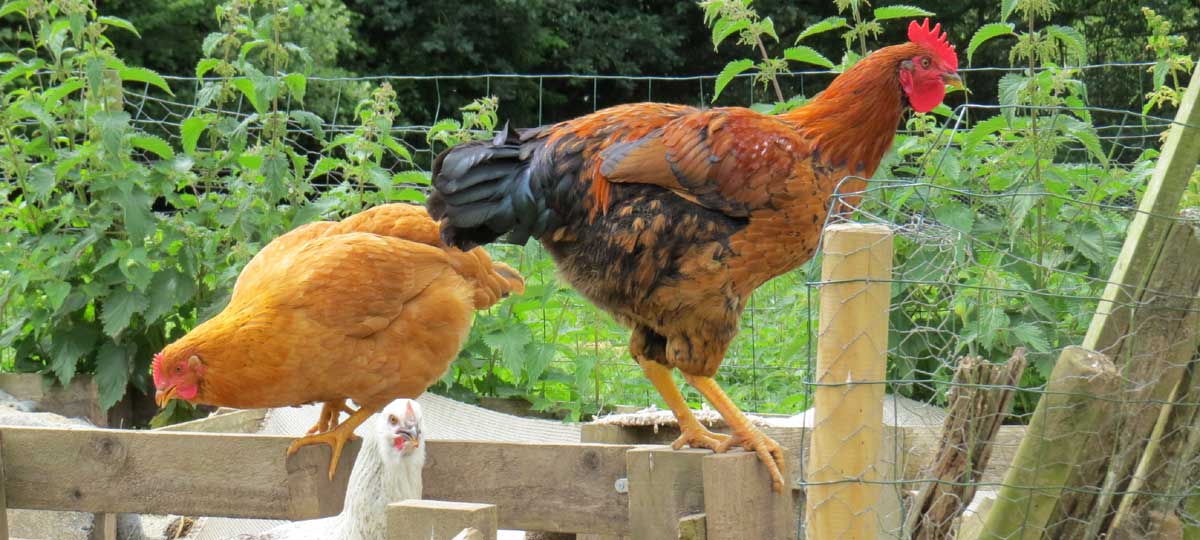
The Pros and Cons of House Sitting
You can sign up to be a house sitter on a number of sites, and for a nominal yearly fee apply house owners can contact you, or you can contact them.
As I am in the process of moving back to the United Kingdom I am using House sitters UK. However, trusted house sitters or mind a home, are also reputable. I suggest you first browse the houses available in the country you plan to visit and then join the website with the best houses in that region.
Make sure you have a stellar profile, it’s here that homeowners can gauge if they’d trust you with their biggest asset (their house) and their most beloved furry family members. A few photos and a detailed description helps them to decide. Once you’ve done a few jobs and have a review it’ll cement the deal.
If you are keen for a good review treat the house well, be respectful of their neighbors, the animals and leave it in pristine condition.
I tend to leave a thank you in way of flowers, fresh bread a small card as a token of appreciation. I am honored and grateful that people have trusted me with their pets, and let me stay in their homes for a few weeks or more.
If a hotel is $100 a night x 30 nights, that’s a savings of $3’000 – which is significant.
At this very moment, I am writing this from a farm in the middle of England. I am looking after a pig, sheep, geese, chickens and a few cats. The countryside is stunning, the villages quaint and I am endlessly entertained by the squirrels, muntjac, pheasants that are running amok in the yard – as well as some rather mischievous rams who are visiting with the sheep.
But as ever there are a few pros and cons:
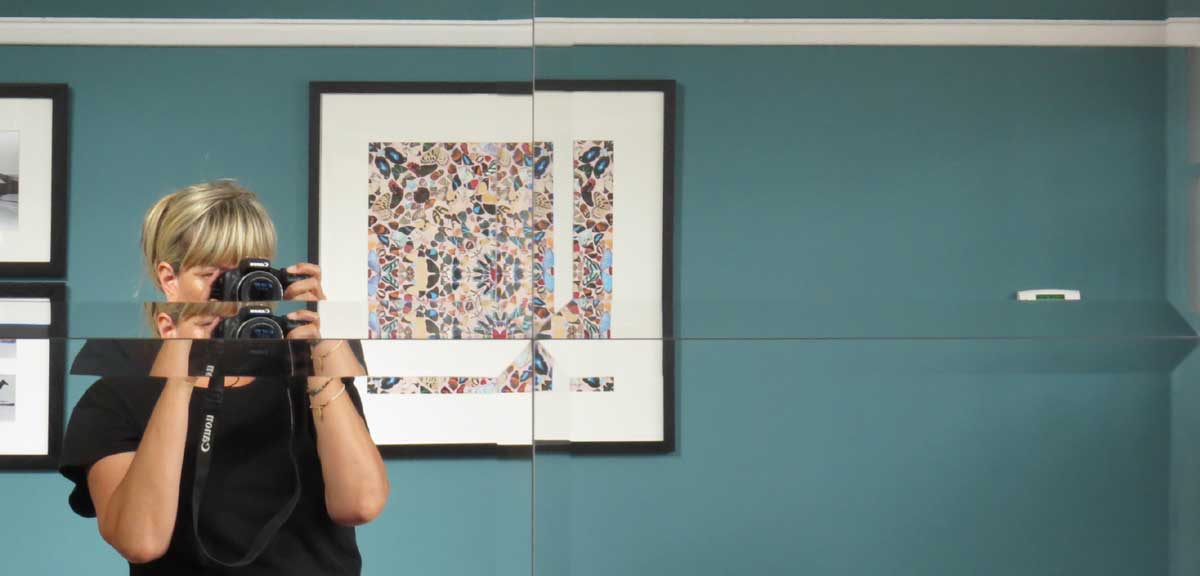
Pros of House Sitting
Free accommodation:
While you do need to cover your own meals, it is minimal. A place to sleep is the biggest expense while travelling, so by having a free place to sleep saves a lot of costs. I’ve also done house-sitting on a farm where eggs and homegrown vegetables were a bonus.
Your time is your own.
Unlike a work exchange, you have all day to yourself. Hours for long walks in the countryside or to play tourist and explore the local area. If you are house sitting on a farm or there are dogs, the animal care may take up a bit more time, but it’s minimal. The downside to so much time is that you may get bored if you are unable to entertain yourself.
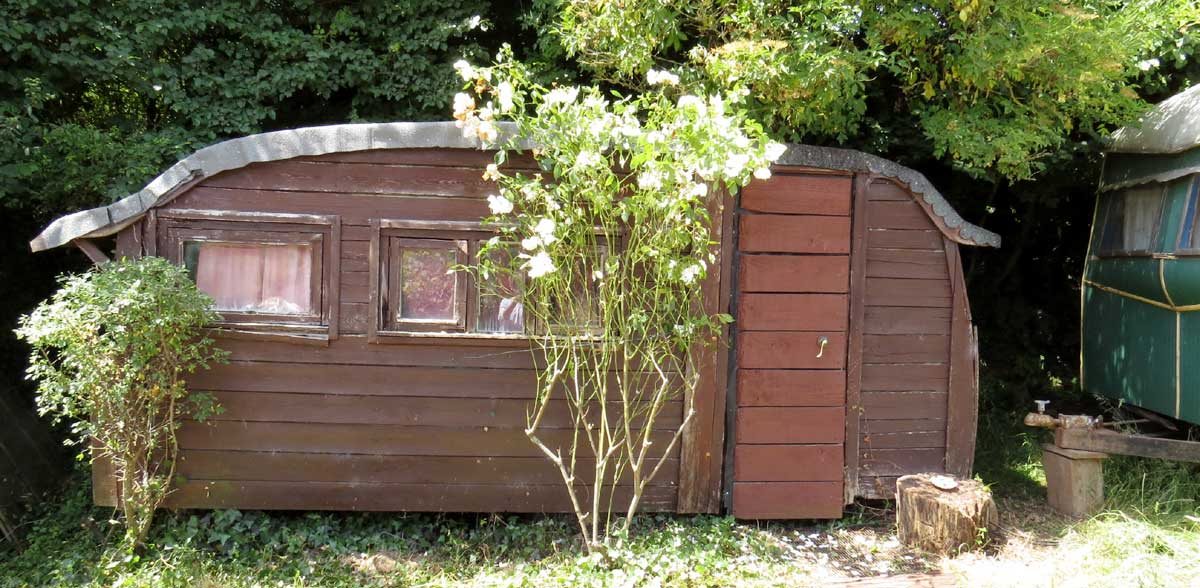
Cons of House Sitting
Responsibility for the house and furry family.
On my first house sitting assignment in the UK, I broke something, I almost died…. Then I replaced it. Luckily it wasn’t a family heirloom. I was especially careful after that. If something were to happen to a pet or anything valuable you are, to an extent responsible. Which is worth keeping in mind, and for me, it means being a lot more careful than I would be in my own house.
It’s a commitment
Once you’ve said yes, you are committed, while I’ve heard of people canceling last minute, as a previous homeowner there is nothing worse than have to resolve or find someone to look after your pet at the last minute. So if I’ve said 6 weeks, that’s it, it’s 6 weeks.
You are in someone else’s space/ environment.
Everyone is different in how they live, hence staying in someone else’s house needs a certain amount of respect and adaptability. Not a big negative, but that could depend on the where you are staying… again I’ve heard some very interesting stories of fleas invested, filthy hovels, and am very grateful it’s not been my experience.
Use your intuition, and if your not sure ask for photos or references from people who have sat there before you – it’s ok for you as a sitter to also ask questions and to be comfortable and confident you can do the job and stay there for the time required.
If it’s in a rural area it can feel lonely and remote.
Like the work exchange, a remote location to some can sound idyllic. Yet the reality might not meet those expectations. If you are not sure, do a week first and then see if this suits you. If you don’t have a car, ask beforehand if there is public transport nearby. I don’t have a car and have still house sit in rural places so long as there is public transport somewhere nearby.
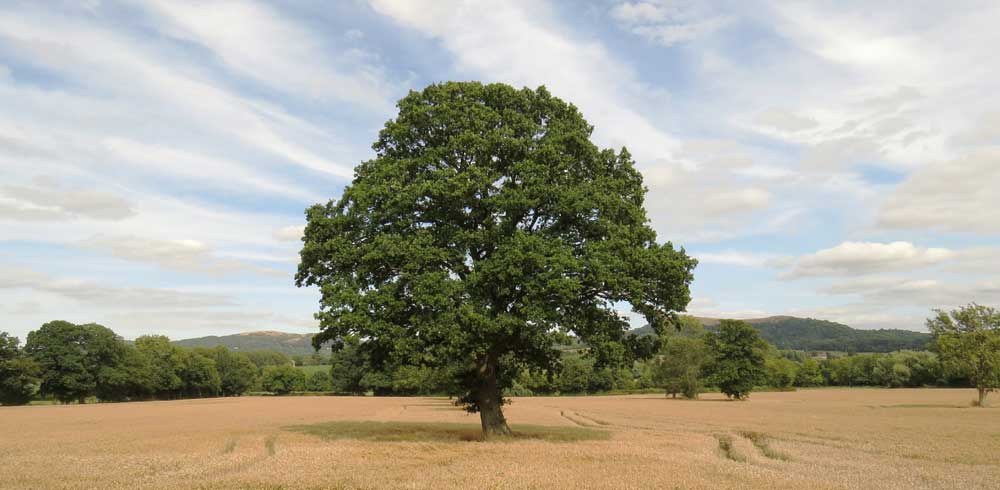
Be clear on what you are looking for.
So yes, you can stay for free, and even get a free lunch, breakfast, and dinner.
More than this, you can make your travel dollars stretch so much further. Which means you, can travel for longer and have a much more immersive experience.
 I left Australia with a minimal amount of savings. Yet, at the time of writing this post, I’ve been on the road now for three months. And my biggest cost is catching a train in the UK from one place to another.
I left Australia with a minimal amount of savings. Yet, at the time of writing this post, I’ve been on the road now for three months. And my biggest cost is catching a train in the UK from one place to another.
Anything is possible, and you don’t need a huge budget to travel and see new places.
As to whether you prefer the work exchange or house sitting, it depends what you are looking to experience.
As I work online, have many personal projects, and enjoy my peace and quiet. I prefer house-sitting.
Yet, I would still do a suitable work exchange tomorrow if the opportunity arose. And the experiences I’ve had to date: Herb farm in Australia, a small village in France, homestead in Brittany and a spiritual retreat near Glastonbury. Were all incredible!
It has helped that I know what I like and don’t like.
In closing:
Be clear on your limits, and boundaries. Be sure to stand up for yourself when and where needed – if you aren’t comfortable working on the roof, say so. Not happy being off-grid, be honest – it’s the only and best policy.
At the end of the day, it’s a big gorgeous incredible world out there and lots of amazing experiences with your name on it.
You don’t need to wait until you saved thousands of dollars, or won the lottery to make travel plans and live the dream.
You can start and go and travel at any moment you choose…
So, choose now…
Main photo, thanks to: Hollie Harmsworth on Unsplash
Useful Websites mentioned:
Workaway: https://www.workaway.info/
Wwoof: http://wwoof.net/
Wwoof International: https://wwoofinternational.org/
Helpx: https://www.helpx.net/
House sitters UK: https://www.housesittersuk.co.uk
Mind a Home: https://mindahome.co.uk/ or https://mindahome.com.au
Trusted Housesitters: https://www.trustedhousesitters.com
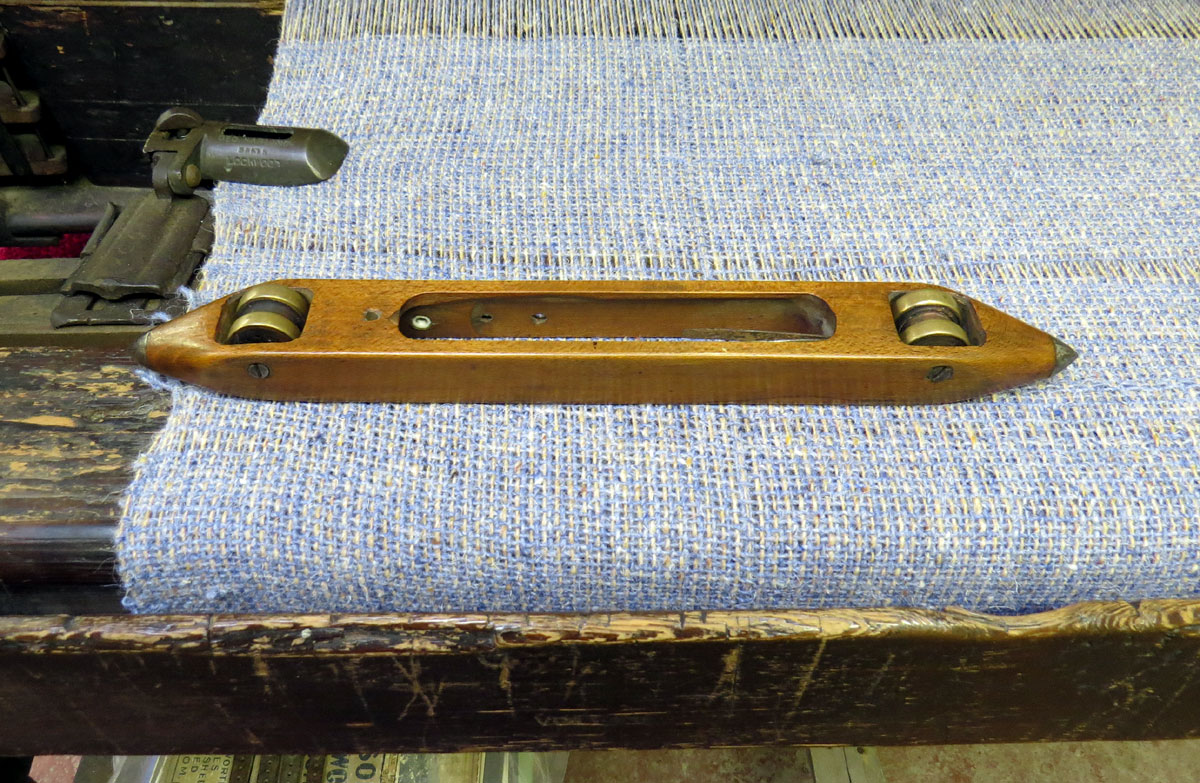 Imagine you wake up in your quaint Cotswold cottage, the year is 1773. You make your way into the main room, squeezing past the immense dobby loom. This state of the art weavers loom takes up most of the cottage’s space with its 4x3x4 meter frame. You yawn, stretch and make your way over the gruel that’s left for you. Your partner and the kids have already gone to work in the Fulling Mill nearby.
Imagine you wake up in your quaint Cotswold cottage, the year is 1773. You make your way into the main room, squeezing past the immense dobby loom. This state of the art weavers loom takes up most of the cottage’s space with its 4x3x4 meter frame. You yawn, stretch and make your way over the gruel that’s left for you. Your partner and the kids have already gone to work in the Fulling Mill nearby.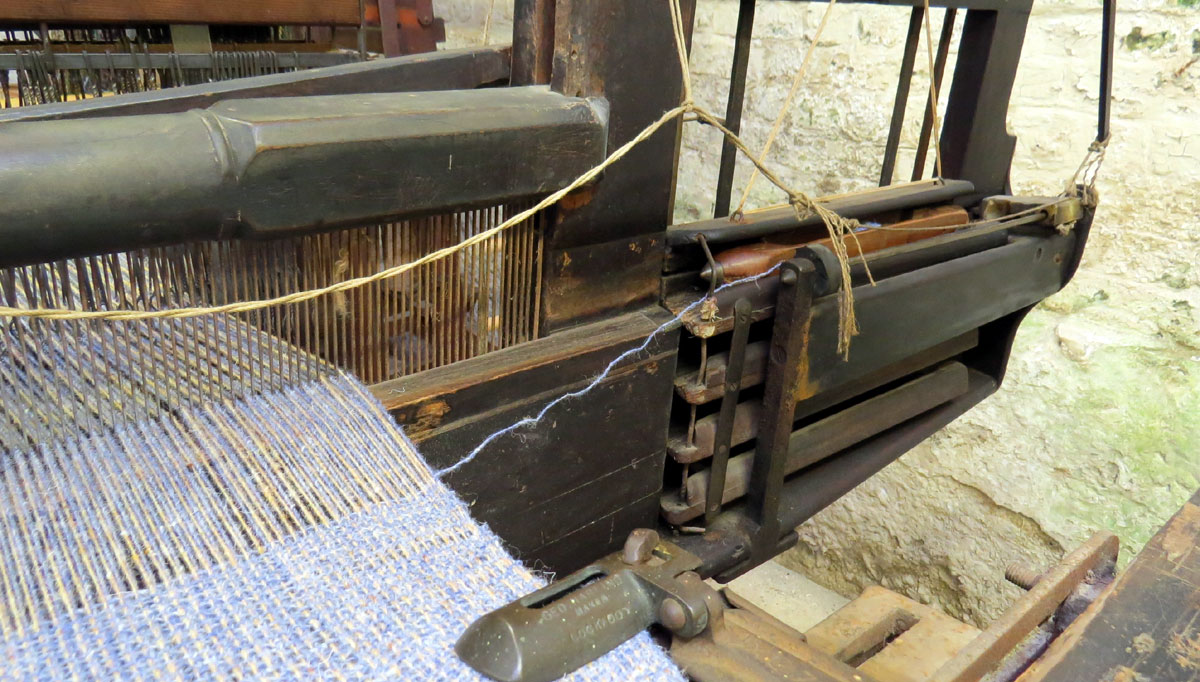
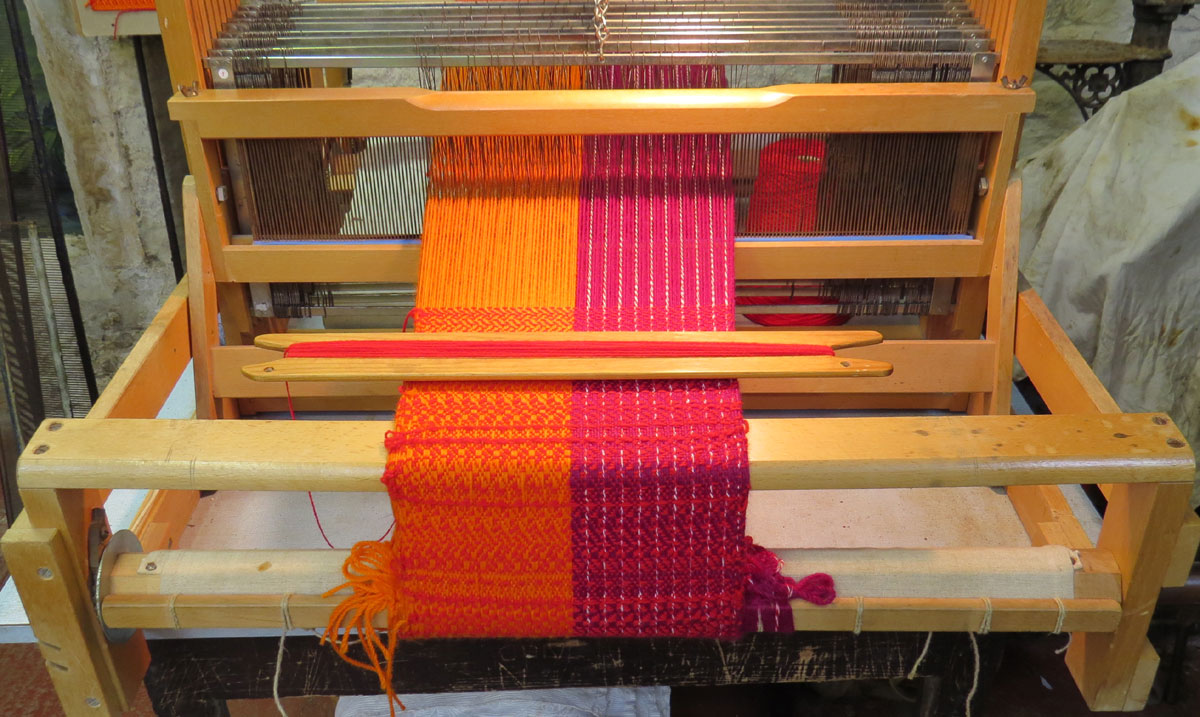
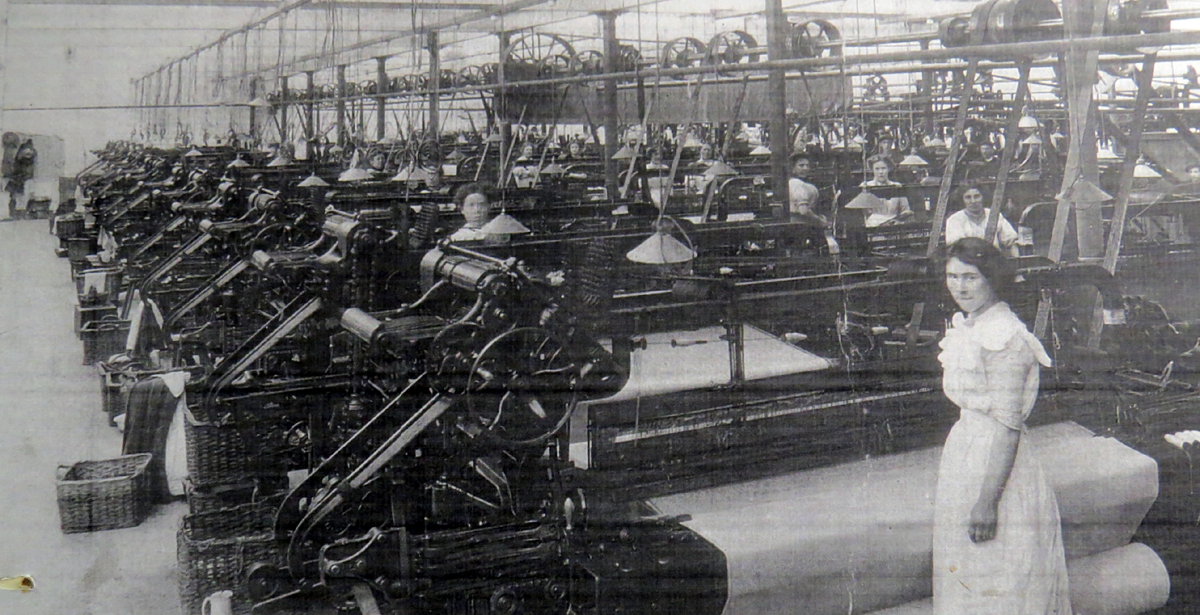
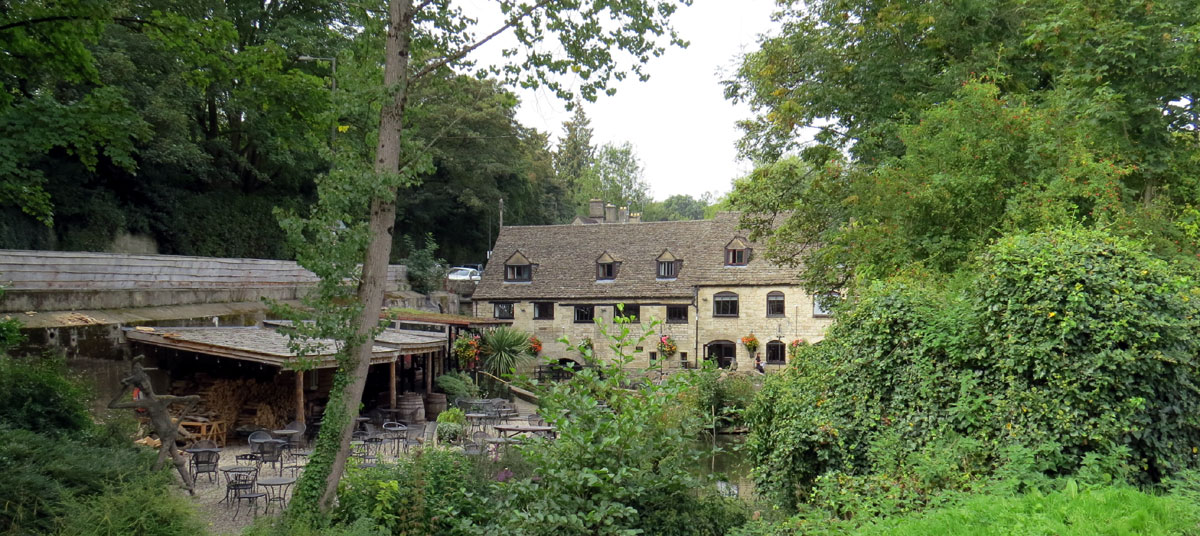
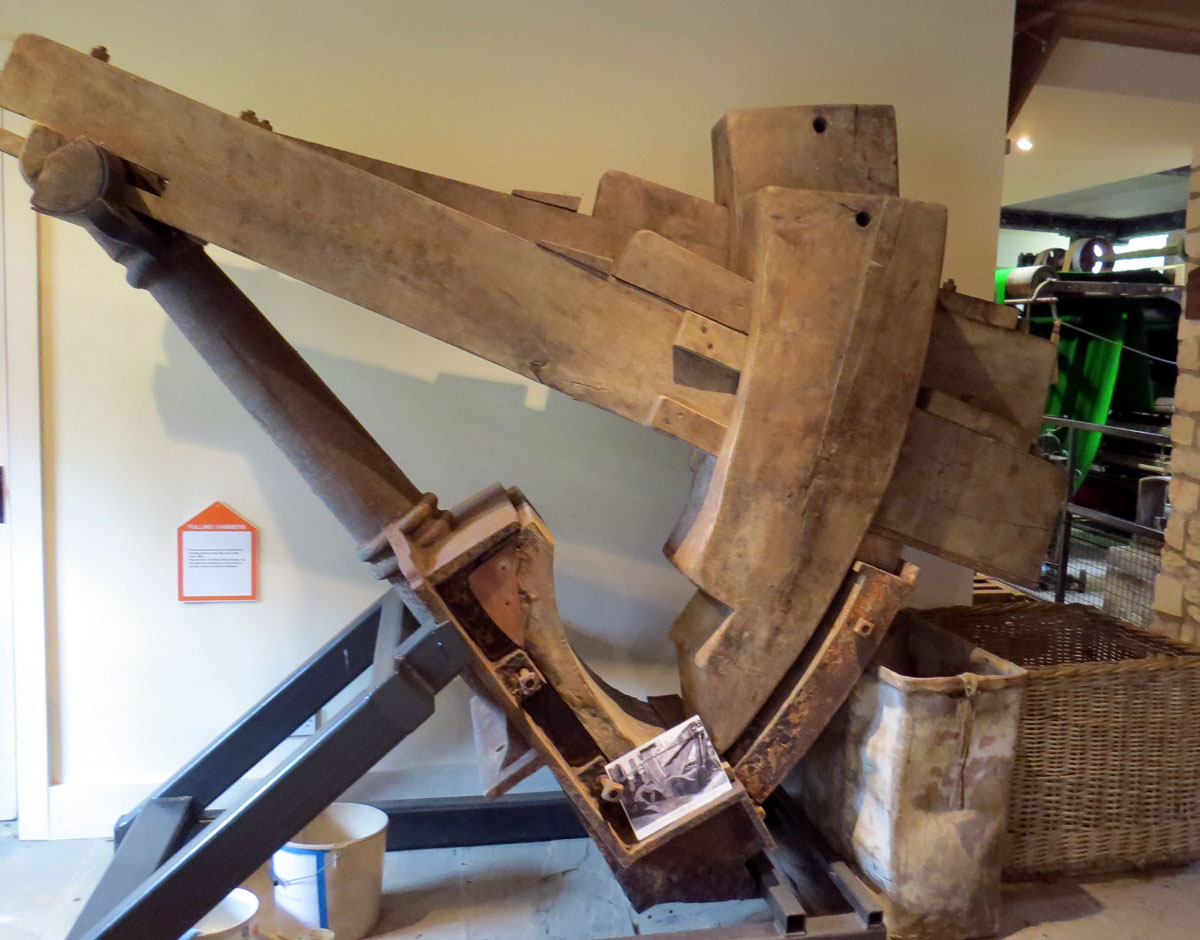
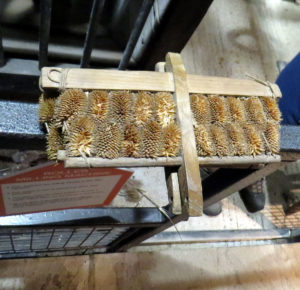 takes up much of the space. Luckily it is well protected to stop anyone falling in. Its power vibrates through the entire room. You can’t help but wonder what it would have been like with four of these wheels turning and all the machines in action.
takes up much of the space. Luckily it is well protected to stop anyone falling in. Its power vibrates through the entire room. You can’t help but wonder what it would have been like with four of these wheels turning and all the machines in action.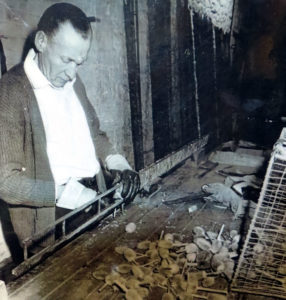 The photo here is of the last teasel setter, who has since passed away. I always find it sad that complete knowledge of a craft can die with someone. An age-old specialism that will no longer be passed on down and through generations.
The photo here is of the last teasel setter, who has since passed away. I always find it sad that complete knowledge of a craft can die with someone. An age-old specialism that will no longer be passed on down and through generations.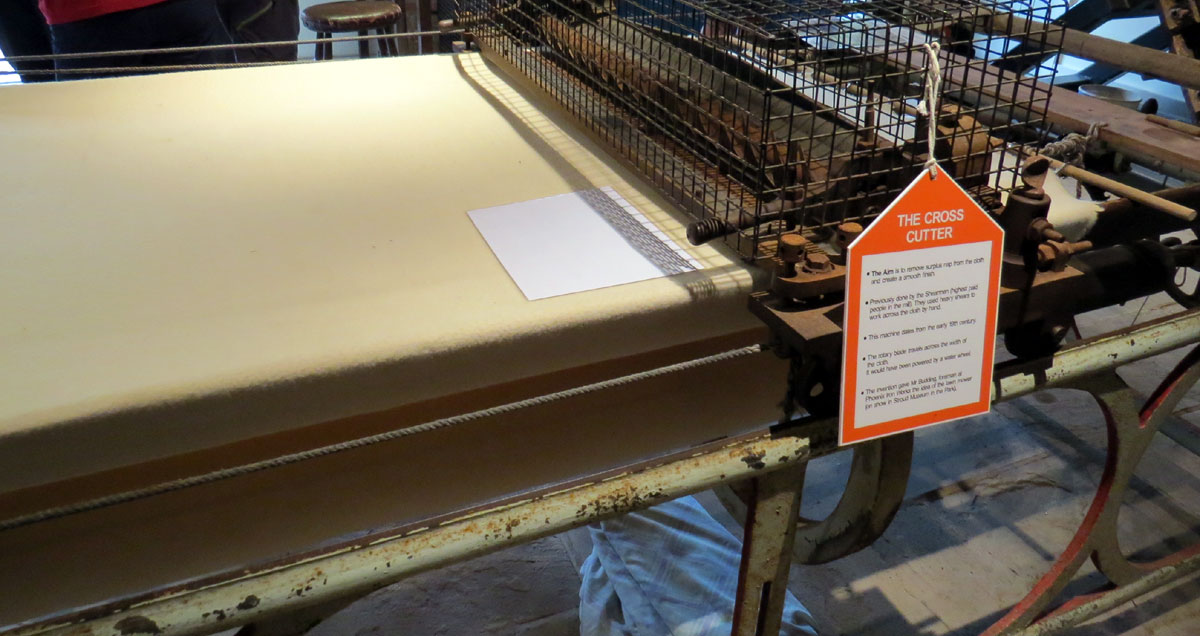

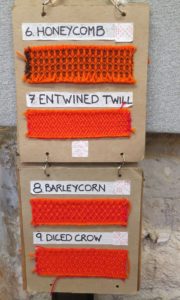
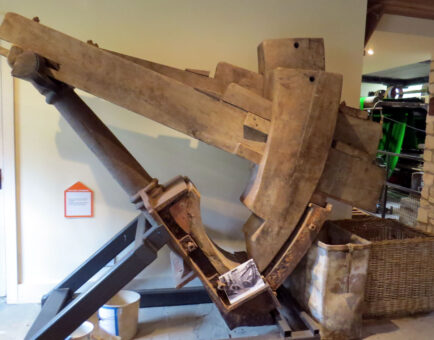
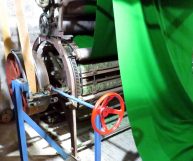

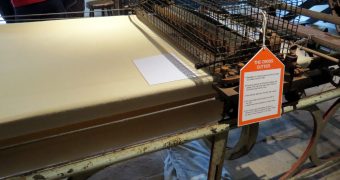
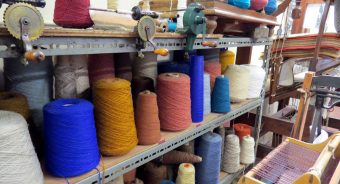

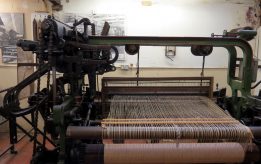
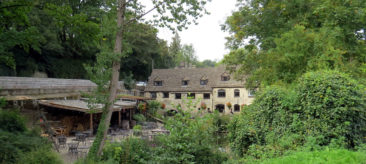
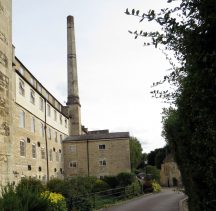
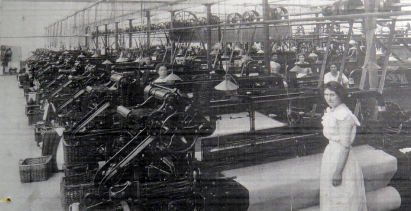

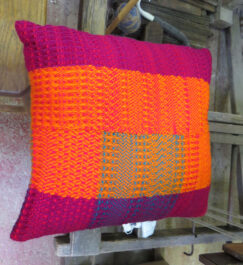
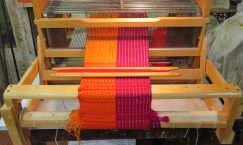
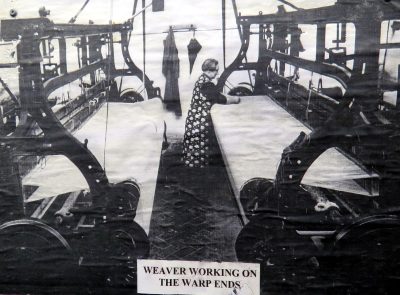
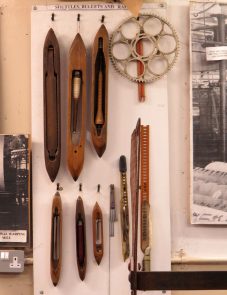
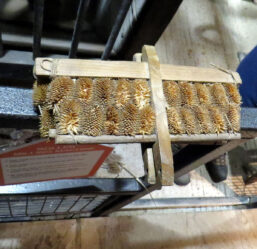

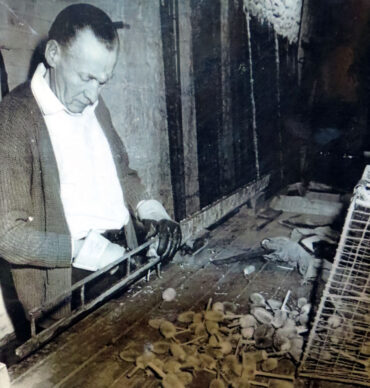
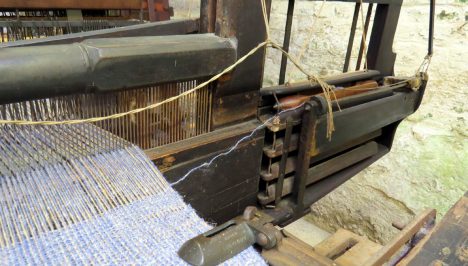
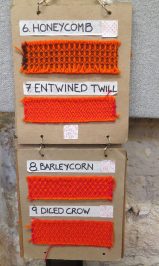

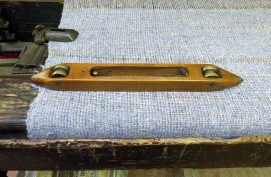

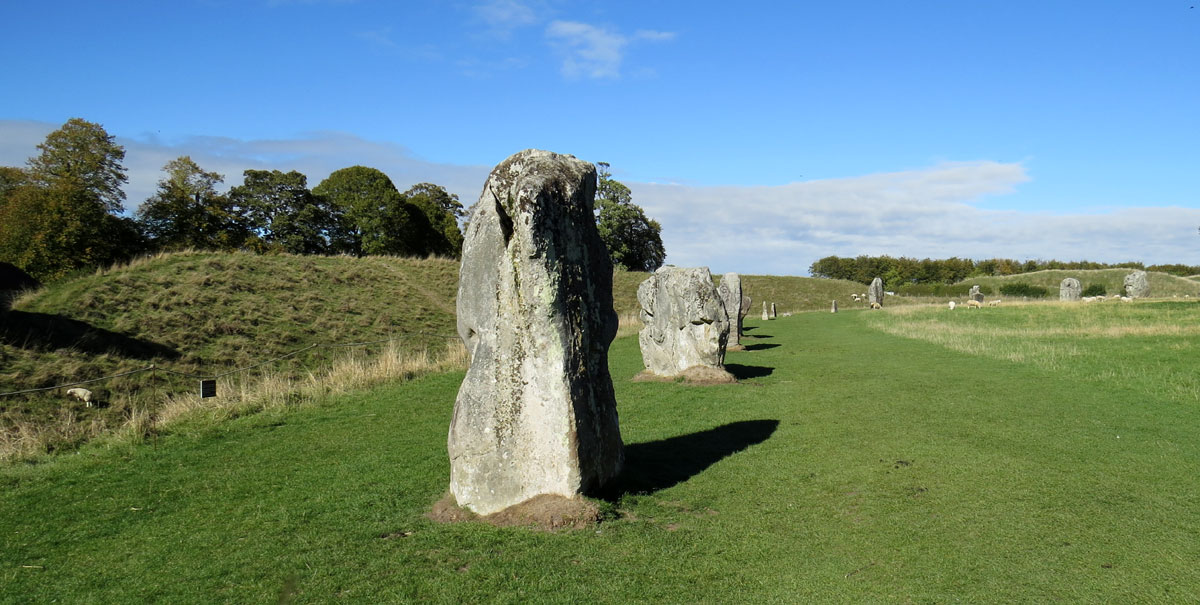
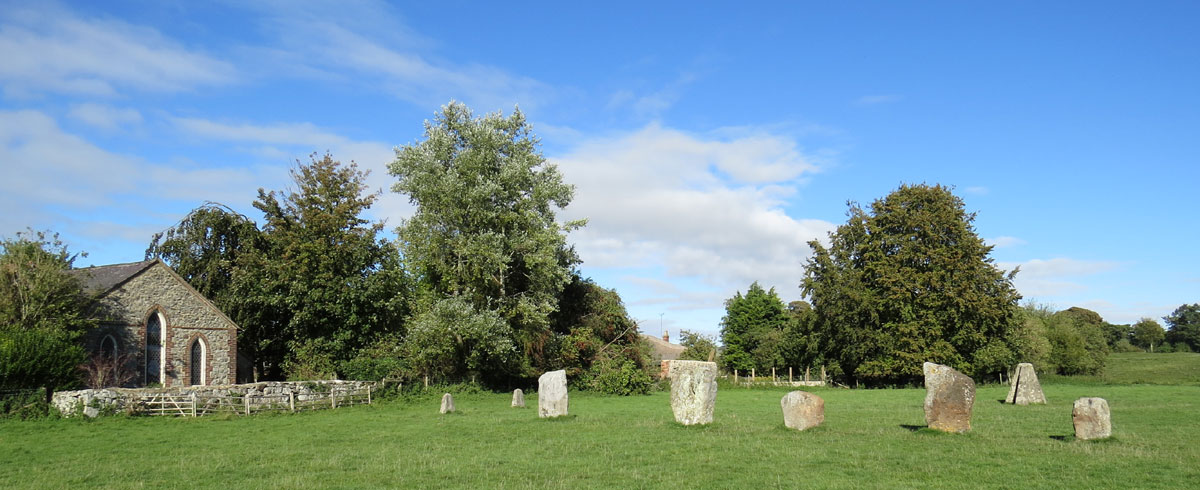
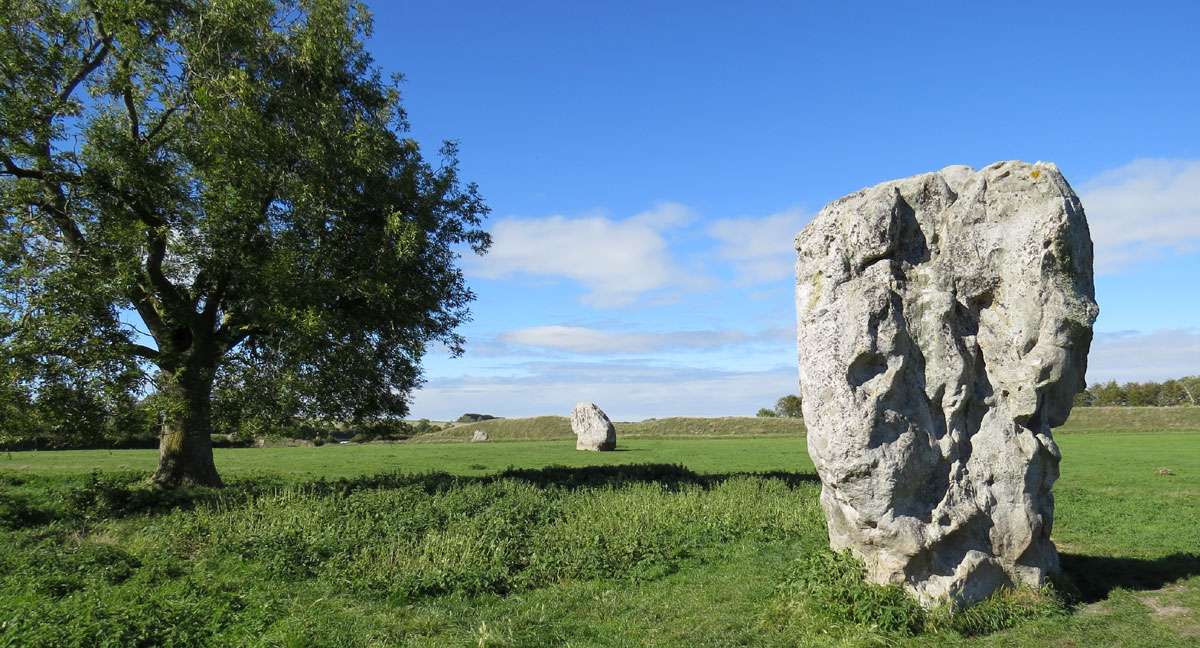
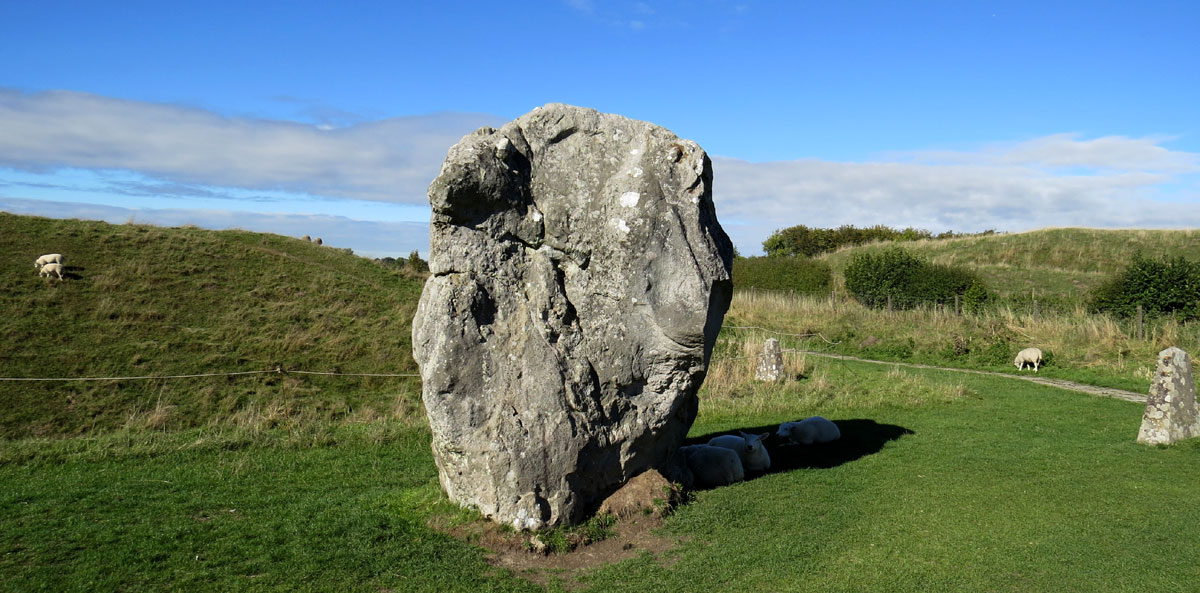
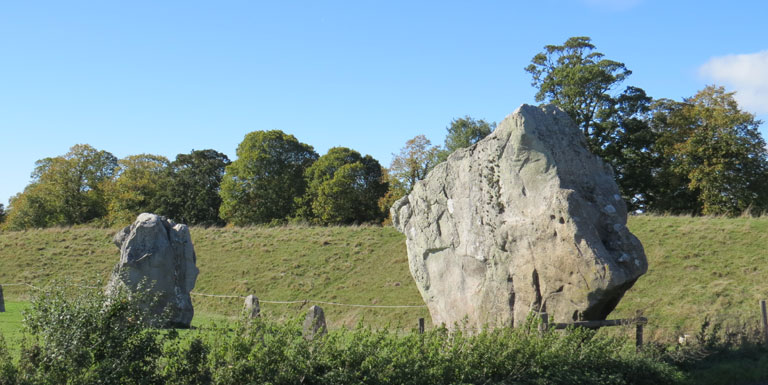
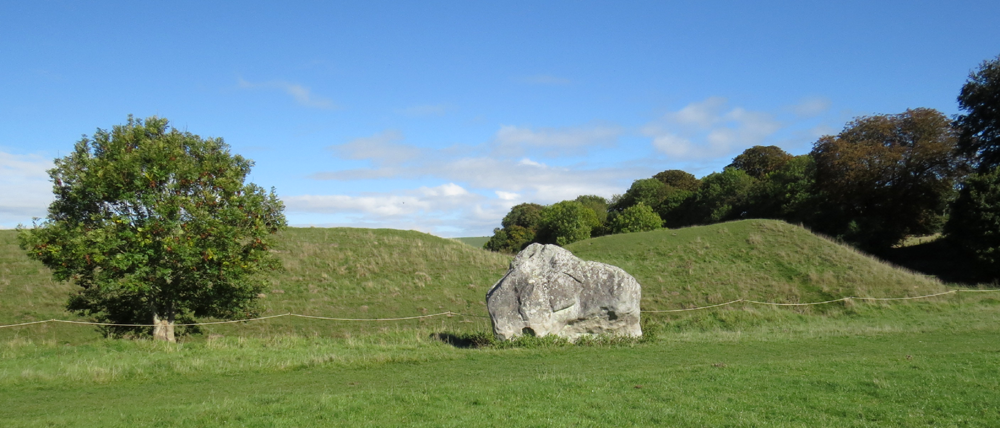
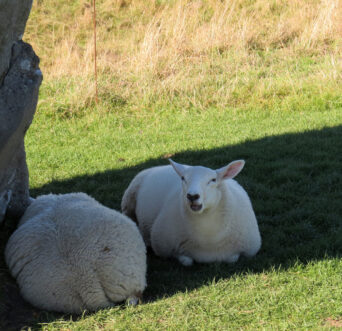








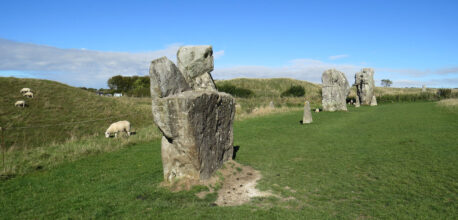
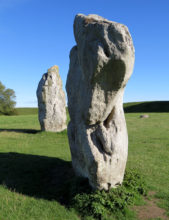
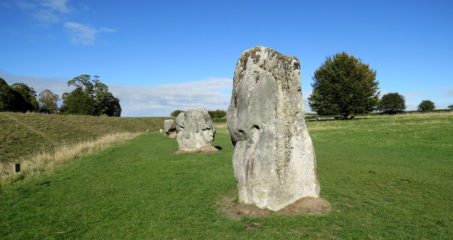

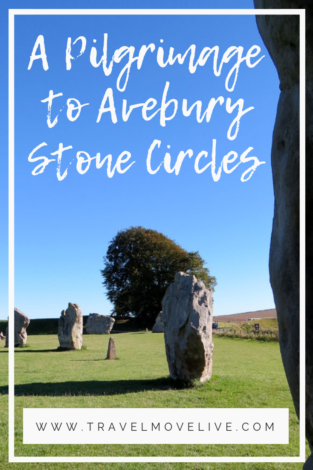

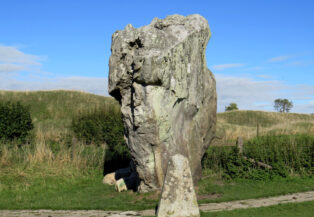
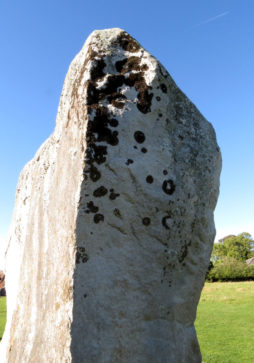
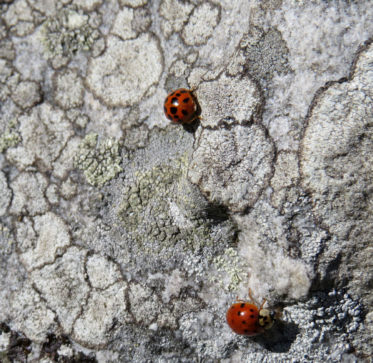
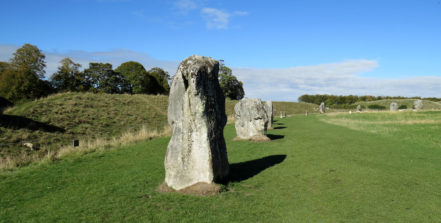
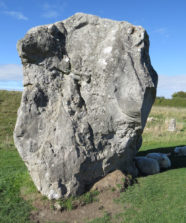
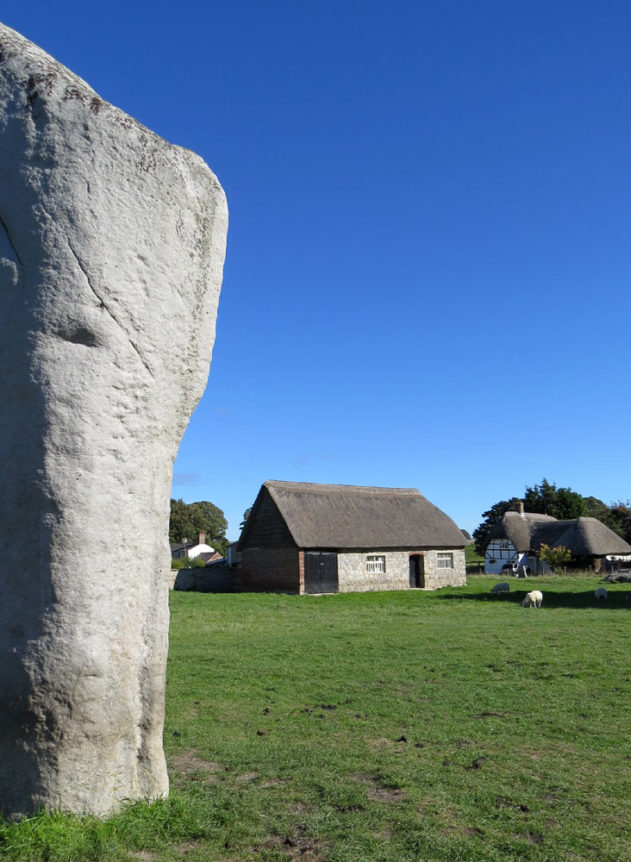
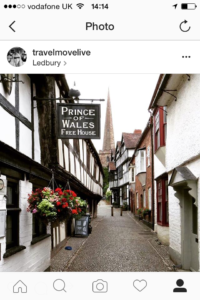
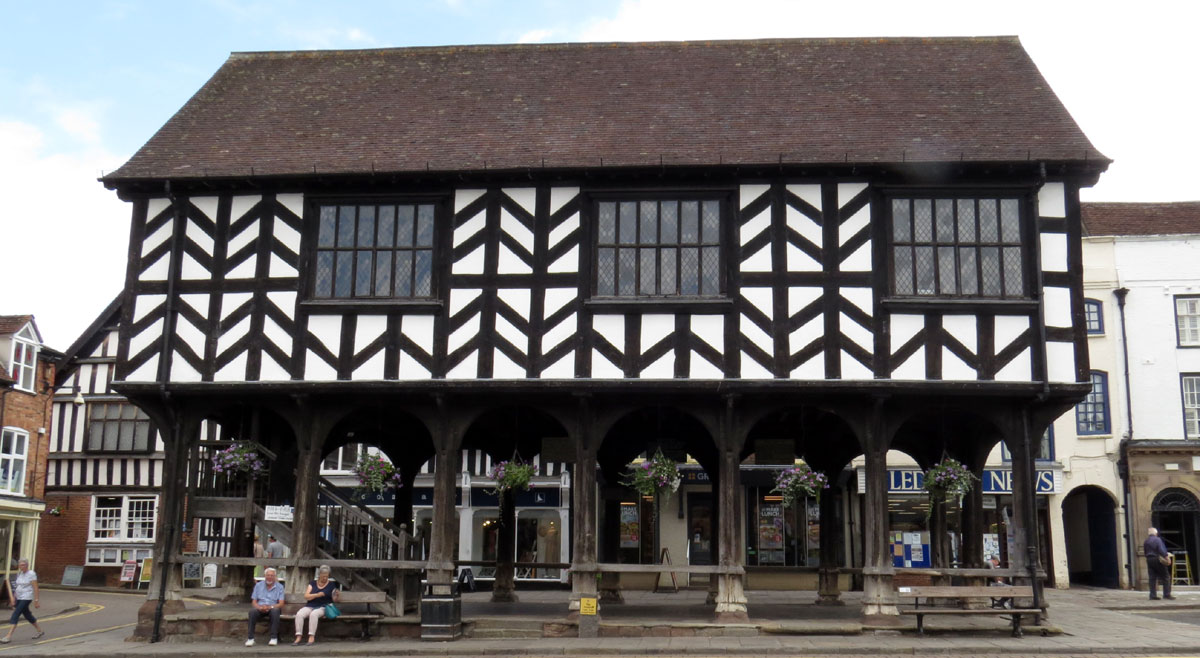
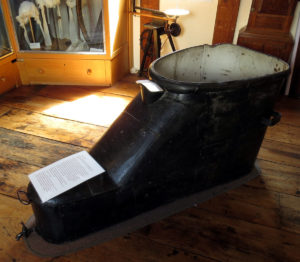 Was built in 1581 and was
Was built in 1581 and was 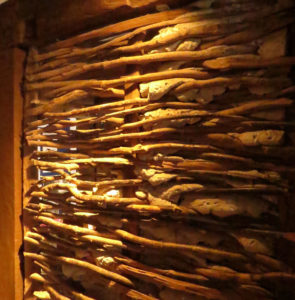 Old Grammar School
Old Grammar School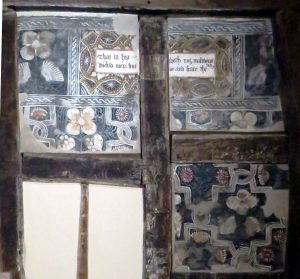 The Painted Room
The Painted Room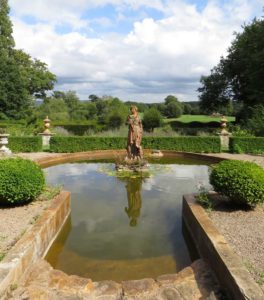
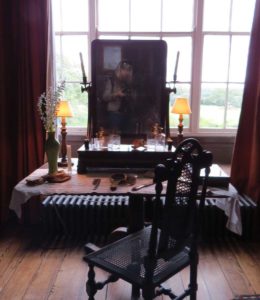





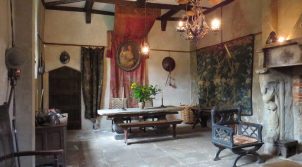
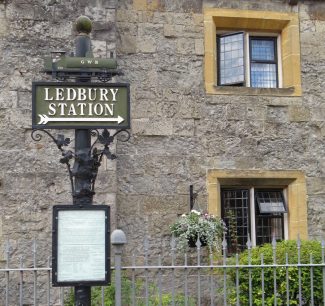
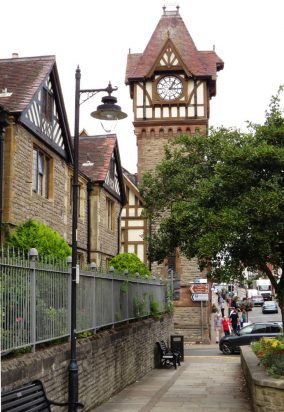
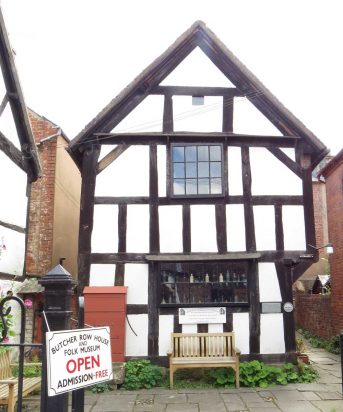
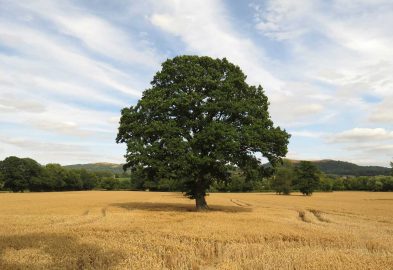
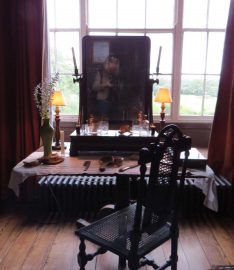
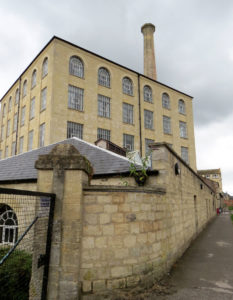 Cathedral of Cloth, Ebley Mill Walking Tour
Cathedral of Cloth, Ebley Mill Walking Tour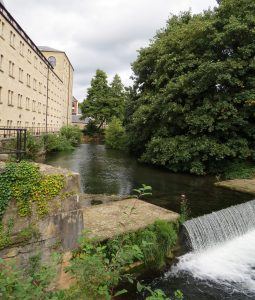 are mentions of two mills being near this site as early as the 1300’s.
are mentions of two mills being near this site as early as the 1300’s.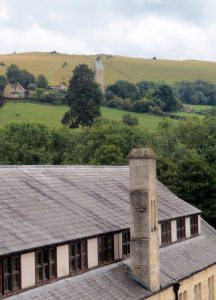 The wool was as much for survival in a cold and rainy climate, as it was for fashion. There is nothing as sustainable, warm & weatherproof.
The wool was as much for survival in a cold and rainy climate, as it was for fashion. There is nothing as sustainable, warm & weatherproof. measure of tough times in it’s past.
measure of tough times in it’s past.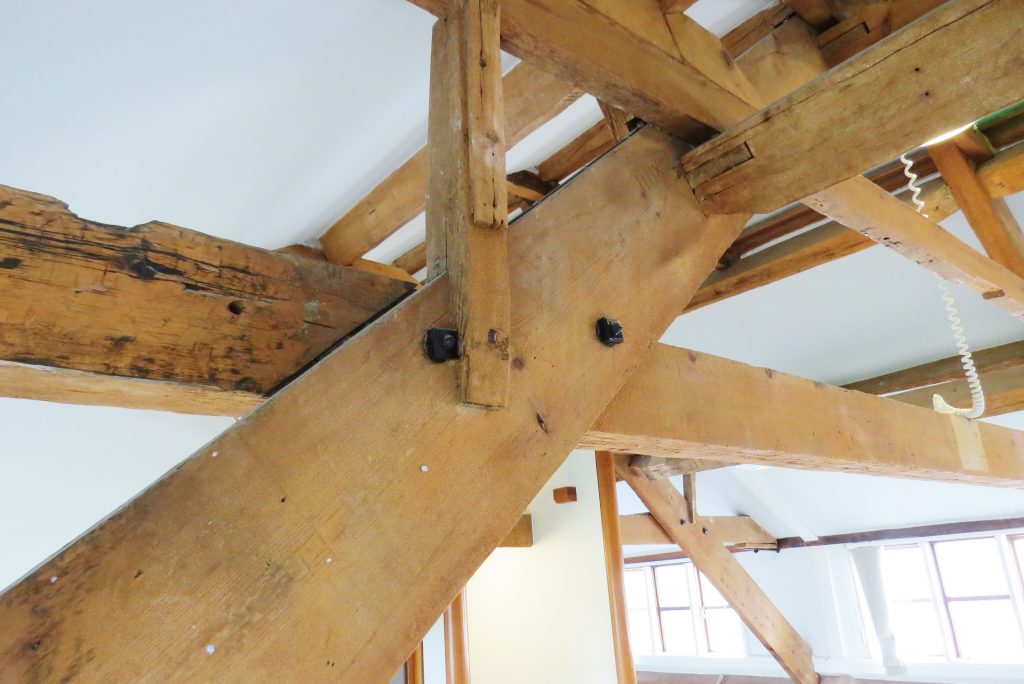
 The tour put on by the Stroudwater Textile Trust, gives us the opportunity to see the behind the scenes. We got a wander through the building and see the touches of the mills past. A past etched into the beams and walls.
The tour put on by the Stroudwater Textile Trust, gives us the opportunity to see the behind the scenes. We got a wander through the building and see the touches of the mills past. A past etched into the beams and walls.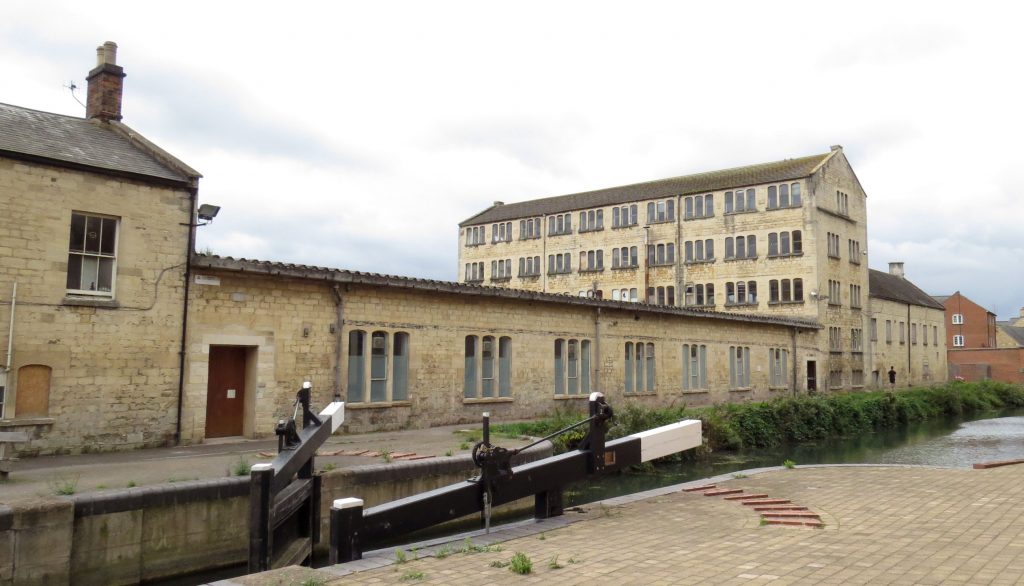

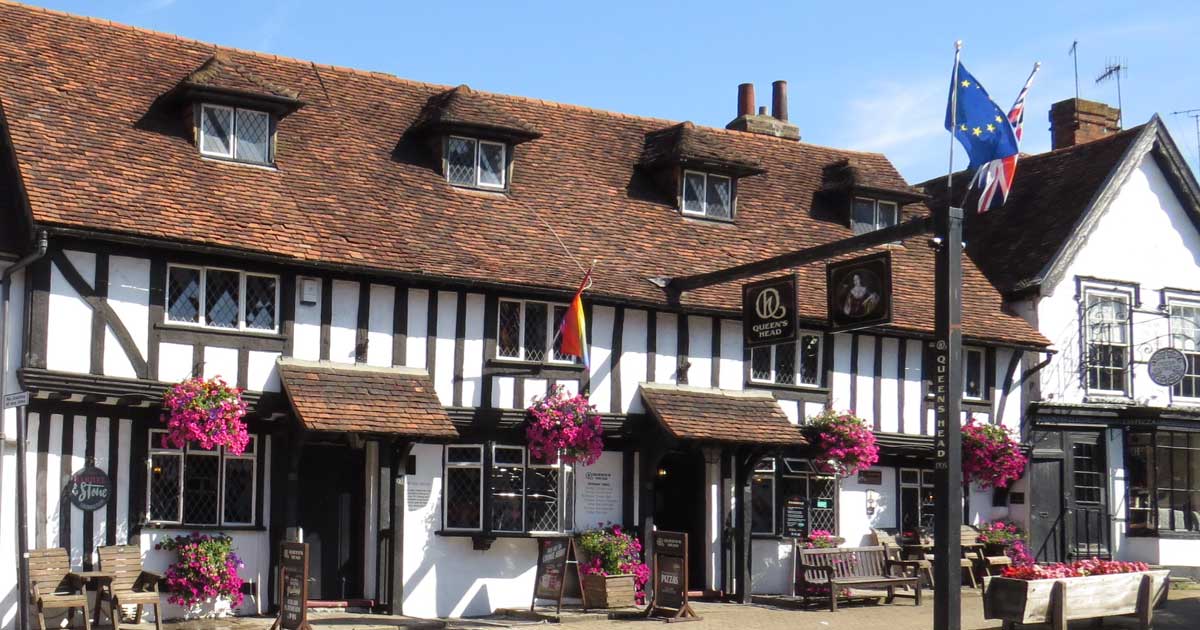







 I left Australia with a minimal amount of savings. Yet, at the time of writing this post, I’ve been on the road now for three months. And my biggest cost is catching a train in the UK from one place to another.
I left Australia with a minimal amount of savings. Yet, at the time of writing this post, I’ve been on the road now for three months. And my biggest cost is catching a train in the UK from one place to another.
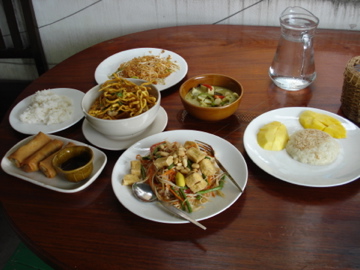
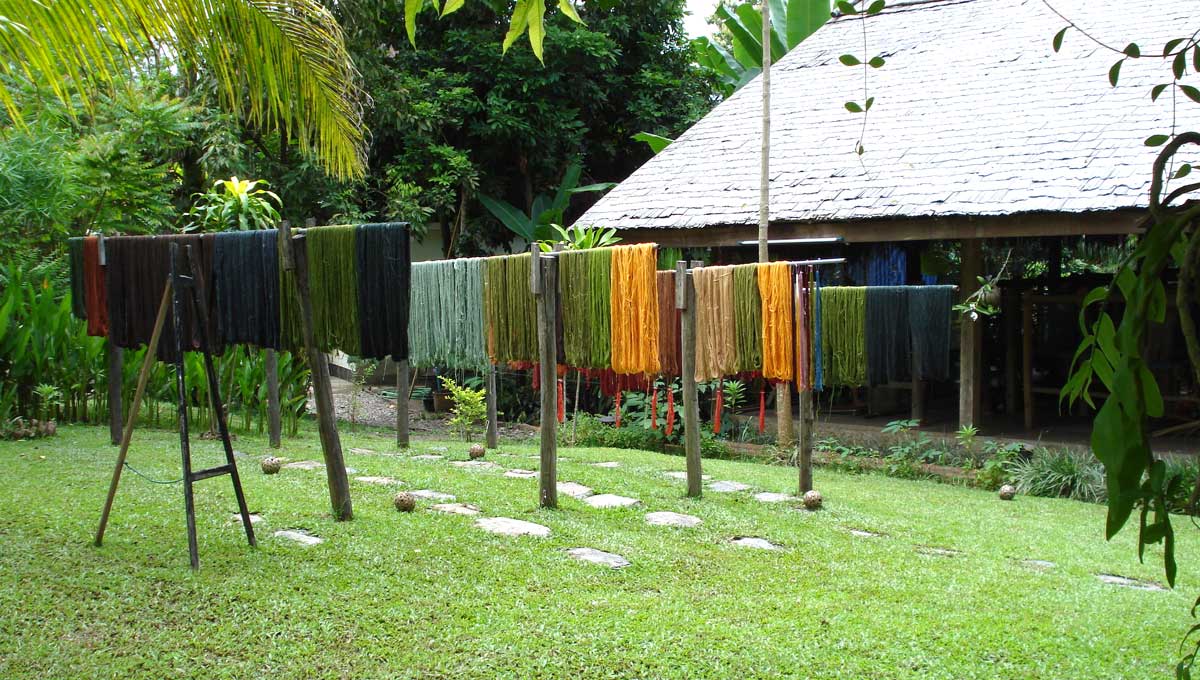


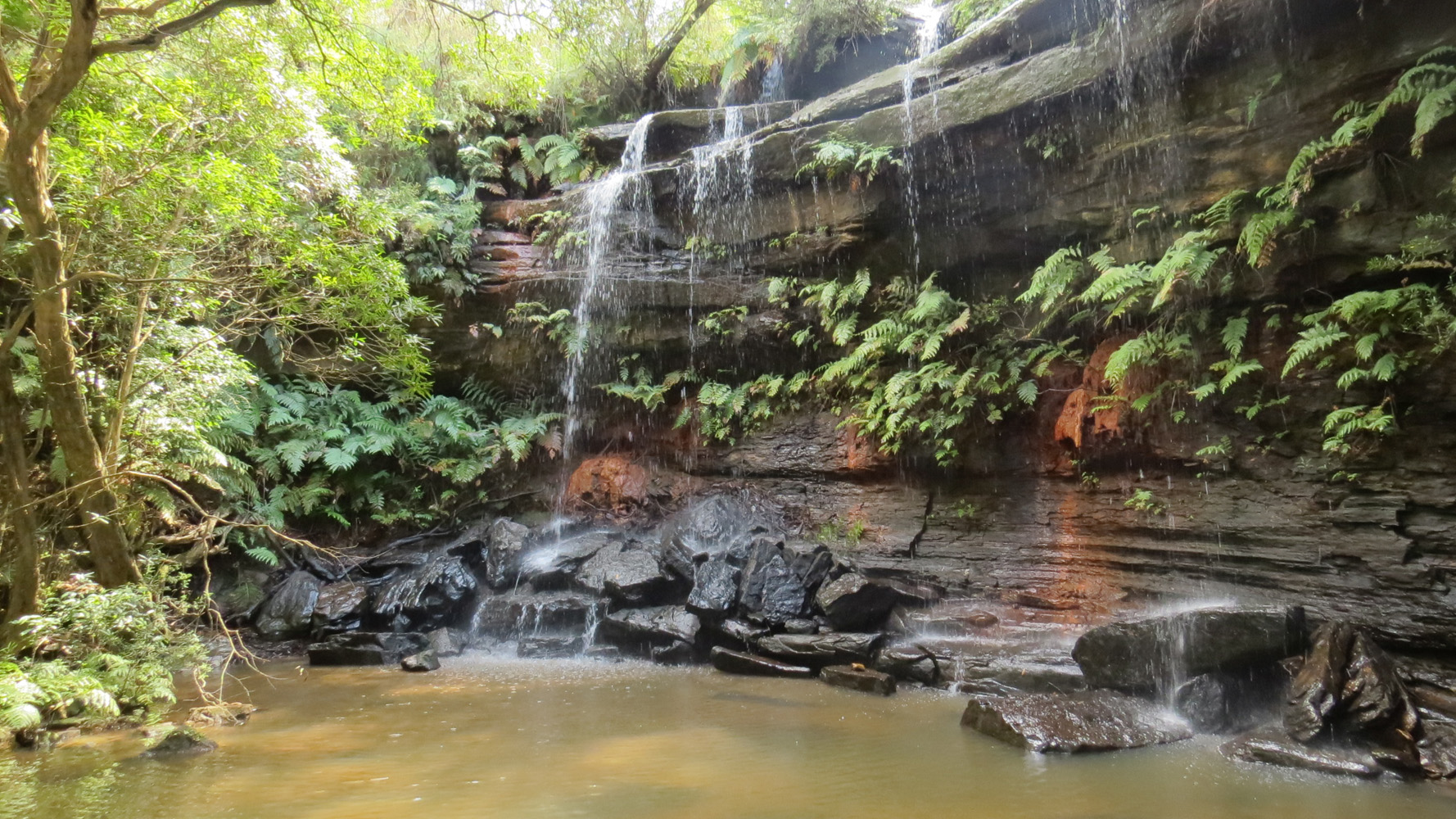
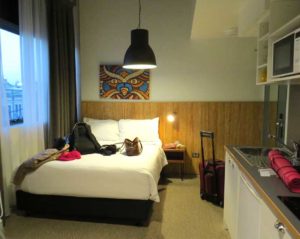
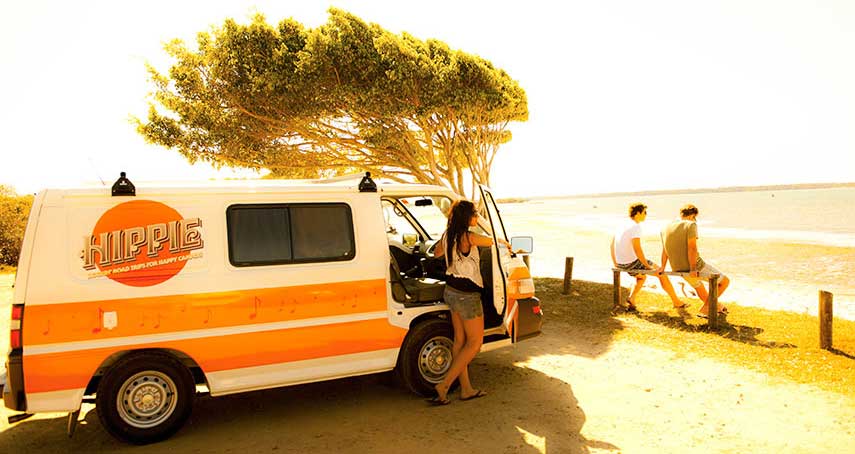


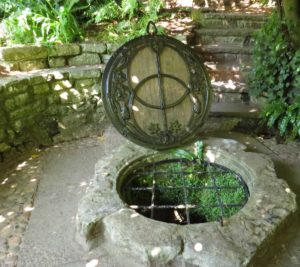

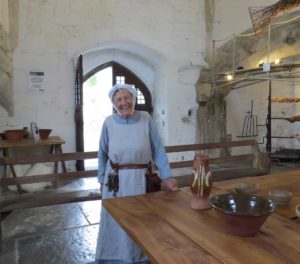
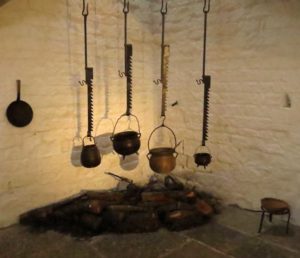 Luckily the wealthy people had the most sins. Which they could absolve for the right amount of money. Which is why the wealthy landlords left all their holding to the abbey in the hope of eternal redemption.
Luckily the wealthy people had the most sins. Which they could absolve for the right amount of money. Which is why the wealthy landlords left all their holding to the abbey in the hope of eternal redemption.